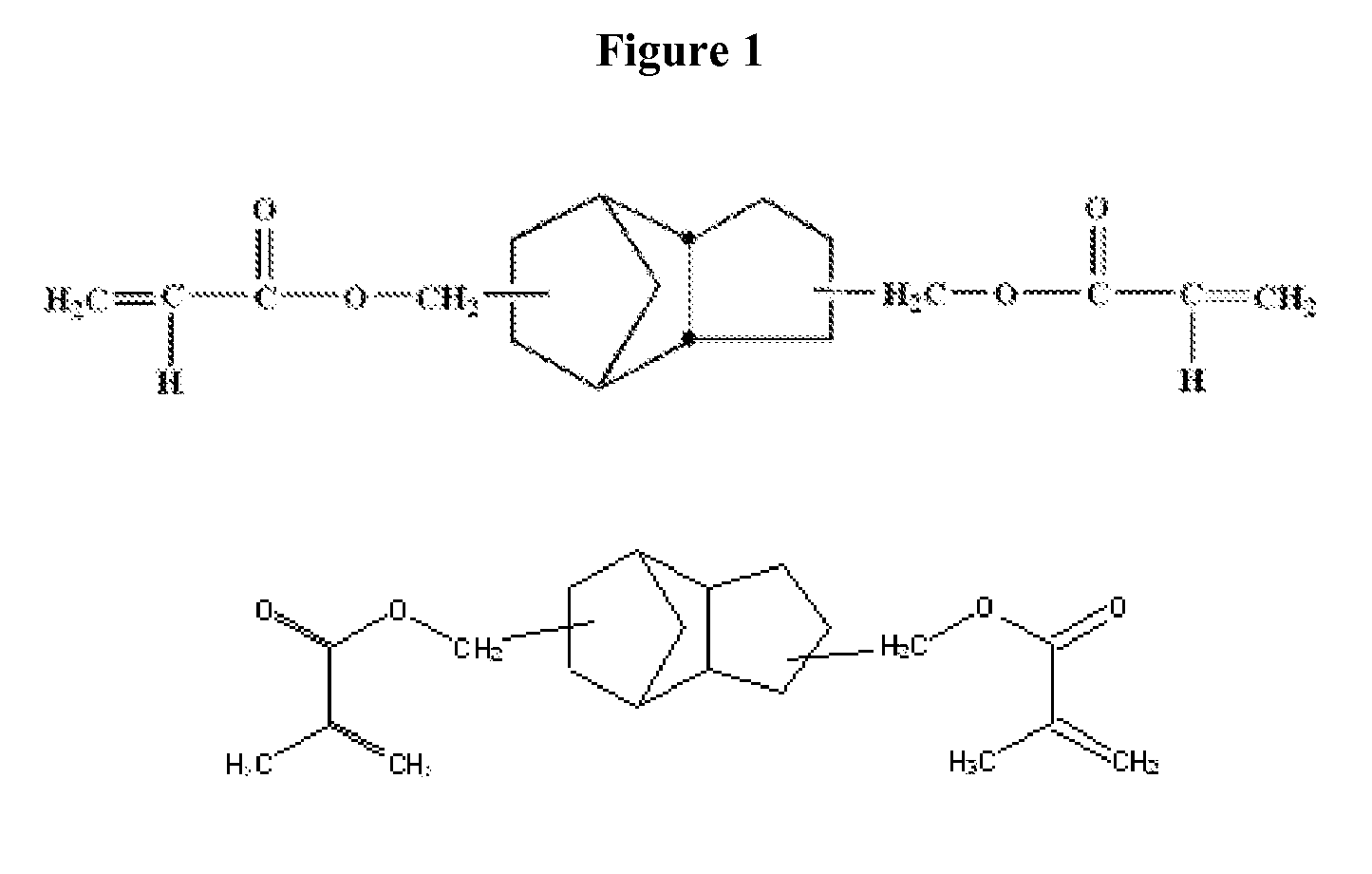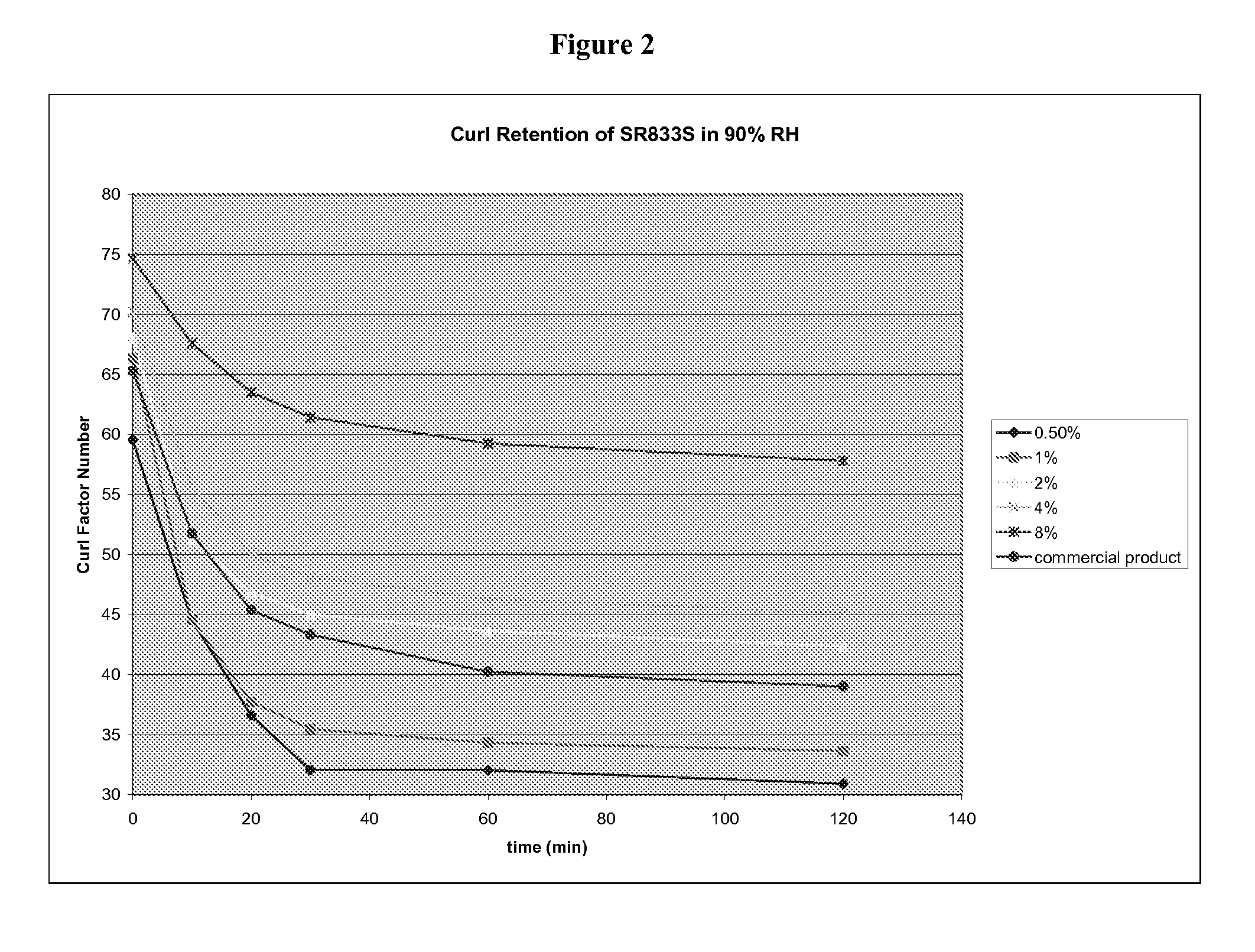In situ polymerization for hair treatment
a hair treatment and in situ technology, applied in the field of hair care industry, can solve the problems of hair care products, existing hair care treatments suffer from numerous other limitations, and the current method of dissolving or dispersing polymers in solvents, and achieve the effects of improving hair strength, color, elasticity, and optical properties, and being effective for longer periods of tim
- Summary
- Abstract
- Description
- Claims
- Application Information
AI Technical Summary
Benefits of technology
Problems solved by technology
Method used
Image
Examples
example 1
In Situ Polymerization of Acrylate and Vinyl Monomers on Hair
[0228] In this example, a solution (designated F2) was prepared containing the pentaacrylate ester SR9041 (Sartomer) (1% w / w), a free radical photoinitiator (1% w / w) KT046 (Sartomer) (1% w / w), propylene glycol (2.25% w / w), and denatured ethanol (95.6% w / w). This solution was applied to human hair and curled with a hot curling iron under UV irradiation using a Black Lamp UV source (λ=365 nm, intensity=7000 μW / cm2). The hair was irradiated for approximately 20 seconds during the curling process and approximately 30 seconds post-curl. As a control, the same procedure was performed on a second hair sample of equal size and type using a commercial styling product (Hot Set, Warren-Tricomi). The two hair samples were washed three times with water and the remaining curl was examined. The hair sample containing F2 showed dramatically increased curl retention. Additionally, the F2-hair sample demonstrated more elasticity and exhibi...
example 2
Testing of Treated Hair
[0267] In addition to the tests described above for assessing various properties of the treated hair, other tests may be used to test elasticity, shine / luster, break strength, and hair fiber thickness.
[0268] In this example, the measure of the hair's elasticity is proposed. A formulation would be applied to a hair sample and curled with a curling iron. One end of the hair sample would be attached to a fixed surface. The other end of the sample a weight was attached. The weight would be raised to a set height and released to extend the hair sample. This process would be repeated several times and the weight would be removed. The recoil of the hair sample would be measured and compared to the recoil of that of a hair sample treated with a commercial product.
[0269] In this example, the measure of the hair's shine / luster is proposed. After applying a formulation and curling and brushing a hair sample, the hair would be wound around a cylinder and placed under a...
PUM
| Property | Measurement | Unit |
|---|---|---|
| Fraction | aaaaa | aaaaa |
| Relative humidity | aaaaa | aaaaa |
| Solubility (mass) | aaaaa | aaaaa |
Abstract
Description
Claims
Application Information
 Login to View More
Login to View More - R&D
- Intellectual Property
- Life Sciences
- Materials
- Tech Scout
- Unparalleled Data Quality
- Higher Quality Content
- 60% Fewer Hallucinations
Browse by: Latest US Patents, China's latest patents, Technical Efficacy Thesaurus, Application Domain, Technology Topic, Popular Technical Reports.
© 2025 PatSnap. All rights reserved.Legal|Privacy policy|Modern Slavery Act Transparency Statement|Sitemap|About US| Contact US: help@patsnap.com



